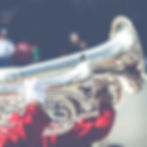The Jewish New Year
- Yehuda Pevzner
- Sep 14
- 1 min read
Rosh Hashanah is the Jewish New Year. Marking the day G‑d created Adam and Eve, it’s celebrated as the "birthday of the world." The festival of Rosh Hashanah 5786 begins at sundown on the eve of Tishrei 1 (Sept. 22, 2025) and ends after nightfall on Tishrei 2 (Sept. 24, 2025).

The central observance of Rosh Hashanah is blowing the shofar (ram’s horn) on both mornings of the holiday (except on Shabbat), which is normally done in synagogue as part of the day’s services.
For someone who cannot come to synagogue, the shofar may be heard the rest of the day. If you cannot make it out of your home, please contact your closest Chabad center to see about arranging a “house call.”

The blowing of the shofar represents the trumpet blast that is sounded at a king’s coronation. Its plaintive cry also serves as a call to repentance. The shofar itself recalls the Binding of Isaac, an event that occurred on Rosh Hashanah in which a ram took Isaac’s place as an offering to G‑d.
Rosh Hashanah feasts traditionally include round challah bread (studded with raisins) and apples dipped in honey, as well as other foods that symbolize our wishes for a sweet year.
Other Rosh Hashanah observances include candle lighting in the evenings and desisting from creative work.
Together with Yom Kippur (which follows 10 days later), it is part of the Yamim Nora'im (Days of Awe, or High Holidays).
Learn more about Rosh Hashanah at JewishNewYear.org.
Candle lighting time for Shabbat: Friday, 6:40 PM
Candle lighting time for Rosh Hashanah: Monday, 6:35 PM. Tuesday, after 7:31 PM from a pre-existing flame.
Shabbat Shalom and Shana Tova Umetukah!
.png)




